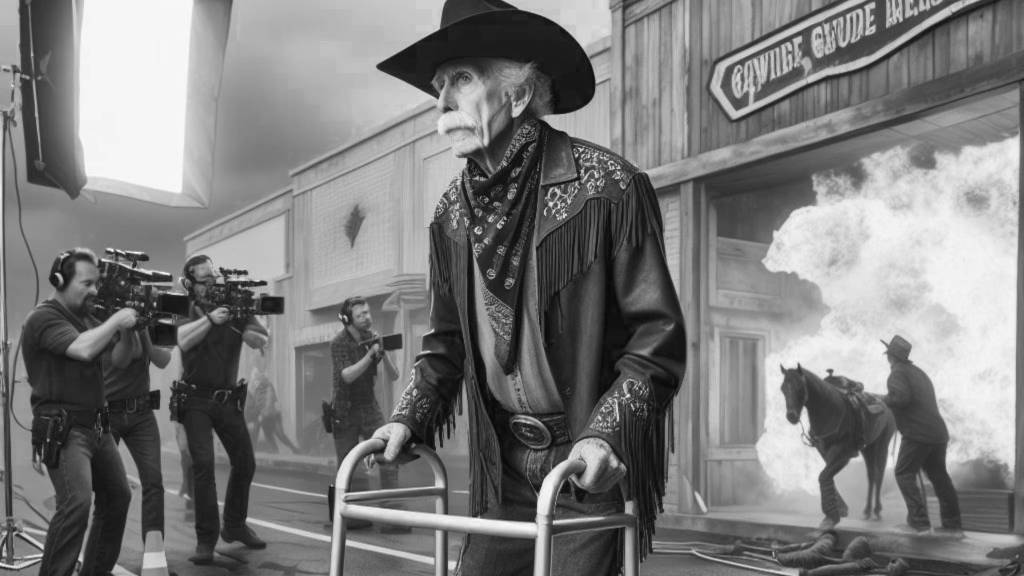

Every year the Awards race brings about an opportunity to highlight and amplify movies that particularly aptly reflect the current zeitgeist. Some would say that over the course of the last decade-and-a-half, the make-up of films nominated for the Best Picture Oscar has been increasingly rich in films that may not necessarily be objectively advancing the medium or breaking new grounds, but rather ones that happen to have something important to say. Sarah Polley’s Women Talking is one such film.
Even the title alone should prepare the viewer for what amounts to a theatrical experience in sharing generations-worth of bottled-up frustrations at the power imbalance between genders, many have been reducing to fit within the confines of the word ‘patriarchy’. After all, it takes merely a handful of minutes to realize that the title Women Talking should be read with appropriate anger, as though in a phrase “Nobody asked your opinion, guy! Women talking here! Shut up and listen!” Which is what I did. I shut up. And I listened.
And listened.
I listened as a diverse group of women opened their hearts to one another and described their bottled-up trauma, a result of lifetime of abuse at the hands of their partners, their fathers, and even their sons and brothers. They described in vivid detail how they were assaulted almost as a matter of course and then gaslit into believing they were visited upon by demons, as though to convince them that their abuse was somehow deserved. They outlined their lives of indentured servitude as they took care of the very same men who would later, under the cover of night, exercise their physical dominance over them and forced them into silence using the raw power of their fists. And they gathered in a barn because they have decided that enough was enough. What we witness in the movie is a complete process of how these women – brutalized, scarred, furious and frightened – came to decide that something needed to be done.
However, the movie is titled Women Talking, not Women Doing; which is why the experience of following how this story unfolds is by definition incredibly uncinematic. Some defenders of the film have described it as 12 Angry Women, connecting Polley’s piece to Sidney Lumet’s iconic piece of boiling hot suspense locked inside of a single room with a dozen of jurors tasked with deciding another man’s fate. Though, I think it is perhaps an unfortunate parallel to make because Lumet’s story relied upon one key element connecting the viewer to the narrative more viscerally. It involved the viewers making up their own minds together with the characters, swaying from left to right, changing positions, and eventually getting frustrated at the fact Henry Fonda’s character seemed to be the only one in the room making logical sense.
In here, things are a bit different. As we observe the proceedings and learn a few things about the nature of the community these women belong to – which is an Mennonite-like society living in the current day sequestered from what we understand as the civilized world – we immediately understand what needs to be done. And this disconnect between what we know and the characters have yet to realize, breeds frustration. Now, this isn’t inherently a problem. In fact, in its basic form this mechanic produces what’s called a Hitchcockian type of suspense. We see the bomb under the table. The characters don’t. And as the timer counts down to zero we become anxious at the possibility of the characters perishing in the blast. Until they act.
However, there seems to be a limit to how far this band of Hitchockian suspense can be stretched, i.e. the time differential until the characters do in fact react to the threat at hand, before dramatic anxiety transforms into impotent frustration at the characters refusing to take action. And that’s more or less how my experience of watching Women Talking went.
As I listened to Rooney Mara, Claire Foy, and Jessie Buckley’s characters outline their frustrations and fears, as Ben Whishaw was busy taking minutes, I developed this Hitchockian anxiety, which – if taken care of at the right moment – would have sent the movie into a climactic crescendo. But it didn’t. This Hichcockian anxiety was allowed to turn into impotent post-Hitchcockian frustration because I knew what needed to be done and I believe the characters knew what needed to be done, but they insisted on discussing the matter some more.
I suppose this frustration of mine may be partially dictated by the simple difference between the way male and female brains are wired. Men prefer taking action to solve their problems. Women prefer to solve their problems by talking about them. In case you are interested, this is also why vastly more women than men successfully address their problems with the help of a therapist, while men will happily join a gym or build a car in their quest to find inner peace. I am not insisting one way is better than the other; all I am saying is that I am fully aware of a possibility that a sizeable chunk of the audience going to see Women Talking will find catharsis and liberation in the process Polley devotes the vast majority of the running time, whereas I secretly wished for the characters to grab their pitchforks and axes and enact their well-earned revenge allowing me to go through my own purification.
However, I think I need to make note of the fact that even the process itself quickly loses narrative freshness and descends into sanctimonious preaching. It is as though Polley was growing angrier and angrier as she wrote the screenplay. Therefore, as the movie progresses, the feelings and ideas she describes by way of putting them into the mouths of the characters are progressively losing subtlety to the point of openly refusing to dress their underlying message even in a modicum of nuance. Consequently, as the movie was slowly getting close to tipping its rhetoric into the realm of action, the filmmaker’s own voice – teeming with righteous fury – was slowly growing to replace the characters’ own voices, thus turning them into veritable sock puppets working in service of advancing a political message bordering on agitation.
As a result, Women Talking eventually descended completely into the chasm of afterschool special ham-fisted preachiness and surrendered any subtlety of its messaging that at least for a little while worked towards delivering an intriguing perspective on the characters’ predicament of living under the jackboot of patriarchal oppression, devoid of a voice or agency. Underneath the “all men are pigs” rhetoric, the film was building a potentially more powerful take-home lesson. It was asking a very important question why these patriarchal power structures form in the first place and – perhaps a bit sheepishly – pointing the finger at traditional structures of organized religion being to blame.
Men are not born corrupt. Power corrupts. And absolute power corrupts absolutely. So, at least to a point, the movie was dabbling with the notion of suggesting that in order for us all to live together in harmony, we should perhaps abandon the shackles of institutionalized religions built on assumptions that women and men are unequal. I know this is a scary thought. And the characters knew it, too. They had no idea how to live and thrive in a world they did not know and they were understandably trepidatious at the thought they would have to abandon the community organized to exploit them.
I just wished they realized it sooner or that they could somehow hear me scream internally at the screen, because to leave their colony and abandon the men was the only logical choice that wouldn’t turn the movie into Kill Bill or Inglourious Basterds (which would have been a bold choice, come to think of it), and it wouldn’t have left the story dramatically unresolved. But the movie is not about action. It’s not called Women Taking Action, even though they eventually do. It’s about the process. Though, I wish this process wouldn’t have ended up hijacked by the filmmaker’s sanctimonious fury right at the moment where the movie needed things to remain subtle.
Unfortunately, Women Talking eventually commits to manipulative schmaltziness and heavy-handed telegraphing of emotions at the expense of allowing the characters to internalize them. By extension, it is as though the filmmakers did not trust the audience would get the message if it hadn’t been tattooed on the characters’ foreheads, which turned what could have been at least an intellectually-engaging (though still incredibly uncinematic) experience, into an afterschool special right before sending me home to wonder if it is my chromosomal makeup that is to blame for all the evil in the world, or if I should blame the Pope instead.
All in all, you’d have to excuse my taste, but I think I’d rather recommend The Assistant as a more interesting and cerebrally challenging conversation about these patriarchal power structures found pervasively in the Western societies. Even though Women Talking is definitely a pertinent addition to the post-MeToo commentariat, as it suggests implicitly that the Gordian knot of gender power imbalance can only be cut by way of women refusing to participate and exercising their agency, I wish it had been a bit more subtle and cinematic in the delivery of its message.
All I’ll say is that some messages are best delivered as a punch in the nose. And Sarah Polley should perhaps work on her right hook a bit more.




Leave a comment